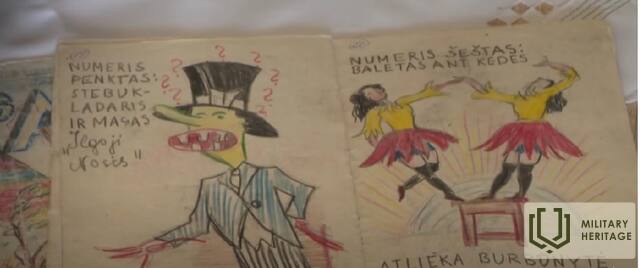"Taiga" in Exile – Journalism Against the Regime
Vytenis Rimkus, an artist who was sentenced to death for publishing the newspaper "Taiga" in Siberian exile, but fate allowed him to survive and return to Lithuania. This is a story about the strength of spirit, the power of creativity, and the indelible national identity even in the harshest exile.
"Exile. The first summer of exile. Our whole family was exiled. My classmate Juozas Balčiūnas also ended up there. We were high school graduates at the time – we were 19 years old. My friend was even a year older. High school graduates – without rights, without property somewhere in the forest... Somehow we met, talked to each other, how everyone was doing. And we thought, maybe we can do something here too?.. To make it more fun and interesting for people – we decided that we should write some anecdotes, fairy tales. There were many exiled families and children in that settlement. There were all kinds of people there. In total, we published 5 issues of the newspaper."
Vytenis Rimkus was born and studied in Šiauliai. In 1949, he was exiled to the Irkutsk region (Siberia) with his entire family at the age of 19. During his exile, he actively engaged in independent cultural activities – together with his classmate Juozas Balčiūnas, he published an underground handwritten newspaper “Taiga”. Five single issues were published, which published anecdotes, fairy tales, illustrations and poems. Rimkus created most of the texts and drawings himself. The newspaper was distributed among exiles – mainly young people and families.
This activity was considered anti-Soviet propaganda. In 1951, Soviet security structures conducted a search, during which original newspapers and other creative works were seized. Based on this evidence, Rimkus was arrested, interrogated and sentenced to death by the East Siberian Railway Court. The sentence was later commuted to 25 years of imprisonment. Rimkus spent five years in the camp, part of which - after Stalin's death - on the basis of an amnesty. In 1958, Vytenis Rimkus returned to Lithuania.
Related objects
Šiaulių geležinkelio stotis
Geležinkelio stotis įsikūrusi Šiauliuose.
1871 m. rugsėjo 4 d. atidaryta trečios klasės stotis, priklausanti Liepojos-Romnų geležinkelio linijai. Šiauliai tapo svarbiu geležinkelio mazgu. Per abu pasaulinius karus stoties pagrindinis pastatas – keleivių rūmai buvo apgadinti ir kelis kartus rekonstruoti: 1923 m. atliktas kapitalinis remontas, 1930-1931 m. rūmai išplėsti ir pertvarkyti. 1935 m. Šiaulių geležinkelio stočiai buvo suteikta I klasės stoties kategorija. Po Antrojo pasaulinio karo stotis vėl rekonstruota. Sovietmečiu 1971 m. rugsėjo 4 d. joje atidarytas geležinkelio muziejus. Stotis tapo SSRS vykdomų represijų prieš Lietuvos gyventojus liudininke: 1941 m. birželio 14-18 d. trėmimų metu iš Šiaulių buvo ištremta 351 šeima ir pavieniai asmenys, trėmimai tęsėsi ir 1945-1953 m.
Šiandien stotis tebeveikia, ant jos pastato sienos 1996 m. atidengta atminimo lenta tremtiniams (po 2010 m. atnaujinta).






